
Our IT Vision and Strategy guides the role of information technology in advancing the University’s mission — driven by input from students, faculty, staff, community members, and partners.
“Pittsburgh is a great environment. We’re a mecca for health sciences and medical breakthroughs. We want to build upon that by working with our technology partners to provide innovations that maintain our momentum, help attract other partners, and contribute to the continued growth of the region.”
- Mark Henderson, Vice Chancellor and Chief Information Officer
We strive to advance the University’s mission by championing our Service Framework, which defines our Common Purpose and Service Standards. Our collective efforts to incorporate these ideals into our daily interactions with each other and those we serve will help Pitt Digital become recognized as a leader in customer service at the University, the region, and beyond.
Our Common Purpose
We create experiences that delight, inspire, and empower people to impact education, research, and the broader community.
Our Service Standards
Security

Ensure safe and secure information systems.
- Always consider security of everyone’s information first.
- Protect and respect the privacy of the customer.
- Be aware of and report potentially malicious behavior.
- Promote security best practices.
Connection
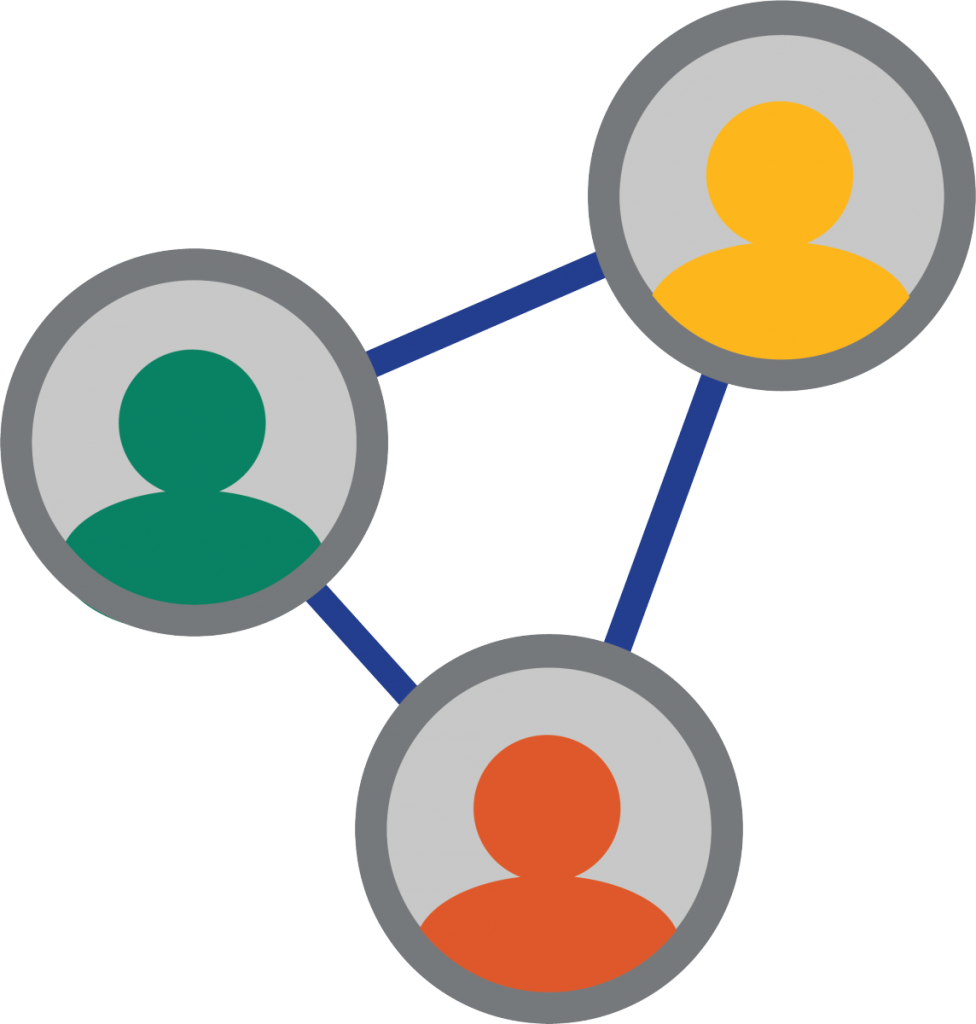
Serve our customers, partners, colleagues, and community with empathy, respect, and courtesy.
- Personalize the experience you provide to others.
- Be pleasant, respectful, patient, and approachable.
- Seek out other points of view and collaborate wherever possible.
- Work as a team and reach across the aisle to both discover and provide answers.
Reliability

Deliver a consistent and trustworthy experience.
- Respond promptly to everyone’s requests.
- Keep commitments when they are made.
- Follow policies, processes, and procedures.
- Perform services accurately and dependably.
Resourcefulness
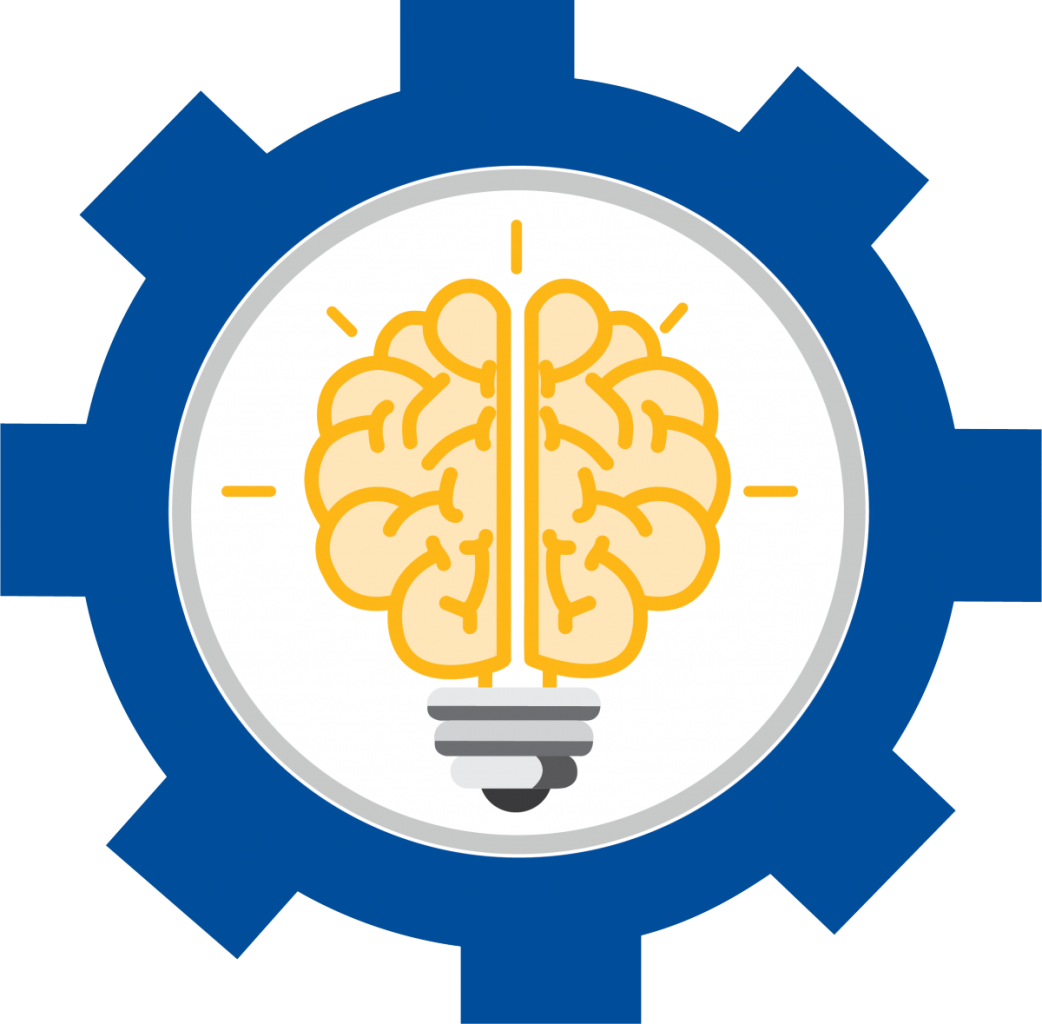
Go above and beyond to find efficient and clever ways to deliver solutions.
- Exhaust ALL available resources to “get to yes.”
- Anticipate operational and business needs and be flexible to change.
- Identify opportunities to gain productivity and reduce duplication of effort.
- Continually learn and develop as an employee.
Leverage IT Resources to Better Align with and Enable the Plan for Pitt
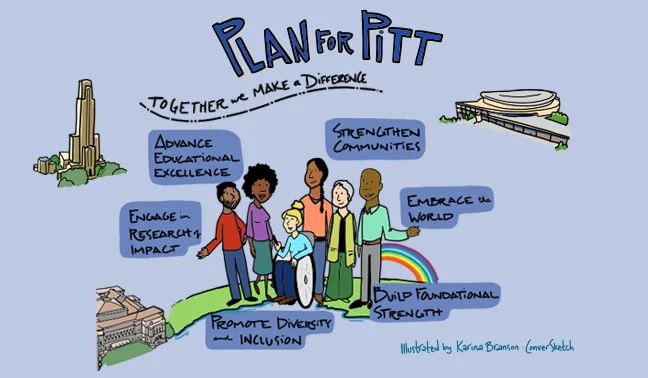
The Plan for Pitt
Providing technology and solutions that enable the Plan for Pitt:
- Advance Educational Excellence
- Engage in Research of Impact
- Strengthen Communities
- Promote Diversity and Impact
- Embrace the World
- Build Foundational Strength
IT Assessment Report
A study compiled by consultant Deloitte found that, while many core IT services are centralized at CSSD, there are a significant amount of IT services decentralized across campus impacting efficiency, effectiveness, and risk management.
Some examples of decentralization include:
- FIS runs and operates PRISM HR and Financials from hardware to applications, resulting in duplicate services, solution selection, and data sharing capabilities
- Pitt has over 19 help desks on campus using at least 16 different ticketing systems
- With at least four other data centers across Pitt campuses, about a third of all physical servers reside outside of CSSD
Pitt spends over $132M on IT
IT Spend by Budget
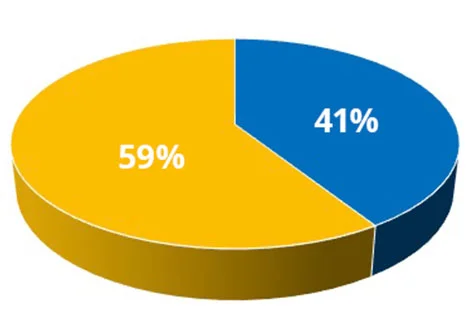 |
|
IT Spend on Hardware and Software
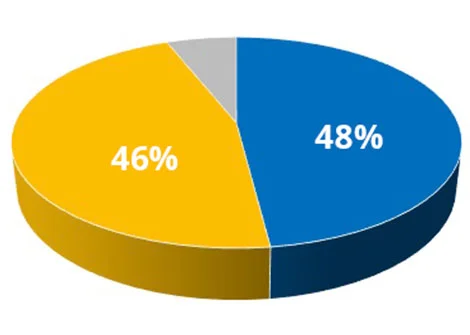 |
|
IT Spend
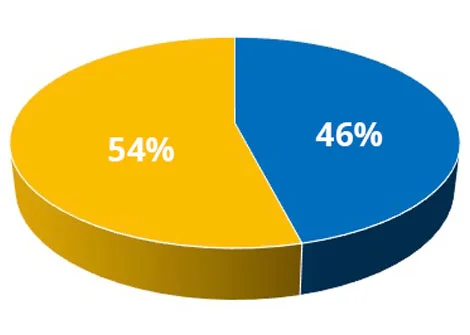 |
|
Pitt has the equivalent of more than 620 full-time IT staff
- 37% in CSSD; 63% across non-CSSD units
- 97 schools and departments have IT staff
Operational Excellence
For innovation to happen, IT must be “hitting on all cylinders.” As such, we are committed to:
- Continuous improvement of all IT services
- Stakeholder engaged and transparent processes for selection of enterprise systems and services
- Service Level Agreements (SLA) with campus on performance of critical systems and infrastructure
- Dashboards for community consumption—indicating performance and availability levels of critical systems
Further, we are planning the creation of the following capabilities:
- IT Project Management Office (PMO) to bring standards and processes to our projects
- Business analysis expertise to lead business process reviews and improvements
- Evaluating the feasibility of creating Lean/Six Sigma leaders as further process review resources
However, operational excellence is not just CSSD. We need all staff involved IT:
- Committed to continuous improvement of environments they support
- Open to training to keep current with technologies that benefit their units
- Willing to participate in University-wide initiatives and provide leadership on experimental initiatives
What We Imagine Doing; Informed by the Plan for Pitt
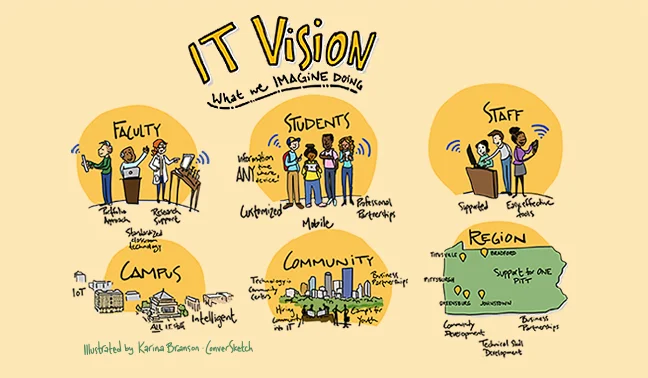
Enriched Student Experience
Enrich the overall college experience—academically and socially
- Personalized learning
- New generation mobile apps for engagement with university and beyond
- Information at anytime, anywhere, on any device, customizable to the student’s desire
- Professional experience opportunities, perhaps for credit
- Microsoft partnership for possible student ecosystem
- Accessibility is considered as part of the student experience
Student Outcomes:
- Higher recruitment and retention numbers
- Better overall experience for students
- “Buzz” about Pitt
- Individualized learning opportunities
- Information when students want/need it, on any device, customizable
Enhanced Faculty Support
Develop an environment that enhances the research enterprise in concert with faculty input
- Standardized classroom technologies
- Portfolio of IT services to support the research enterprise
- Effective software licenses in support of Pitt researchers
- Implementation of Canvas learning management system
- AWS and Microsoft Azure cloud services in support of teaching and research missions
- “IT Power Plant” services to support faculty needs
Faculty Outcomes:
- Better support for research activities, yielding more grants
- More grant funds for basic research instead of needing to run own IT shop
- Standard classroom configurations allowing more time teaching, rather than worrying about technology
Digitization of the Campus
Create a digitally enabled foundation for teaching, learning, and research
- Create an intelligent, data-driven campus able to provide information to the community
- Utilize smart platforms; improve the public safety footing of the campus
- Provide pervasive wireless connectivity across campus, buses/shuttles, and the Oakland Fifth & Forbes Avenues corridor
- Utilize IoT devices to provide data for better managing our environment
- Work with all IT staff to make Pitt Information Technology the premier destination for IT professionals
- Include accessibility as part of overall campus initiatives
Campus Outcomes:
- Intelligent campus able to provide information to students, faculty, staff, and alumni community
- IoT allowing data collection to better inform decision making
- Pervasive Wi-Fi across the campus and beyond
- Better tools and training to enhance staff productivity
- Training opportunities for staff to move into new jobs if interested
Community Engagement
Enhance the city around us and reduce the digital divide
- Enhance use of technology in Homewood and Hill District Community Development Centers
- Leverage vendor partners to offer certification programs at these community centers
- Participation in community programs by hiring community members into CSSD programs
- Provide support services/sponsorship to businesses who can connect to our wireless efforts
- Expand summer IT camps for city youth
Community Outcomes:
- Better community engagement with Pitt
- Technology-enabled community development centers
- Improved skillsets of community members
- Participation in OnePGH initiatives
Regional Impact
Create a connected destination for innovation
- Work with non-profit organizations to support OnePGH initiatives
- Expand community development engagement across the region
- Enhance technical skills of a critical mass of community members to attract business to the area
- Provide support services/sponsorship to businesses who can connect to our wireless efforts
- Expand summer IT camps for community youth across the region
Regional Outcomes:
- Expansion of community development programs in the region
- Better skilled workforce as a result of the above
- Better support for “organic innovation”
- More entrepreneurs viewing our region as a destination
How We Do What We Have Imagined; Enabling the Plan for Pitt
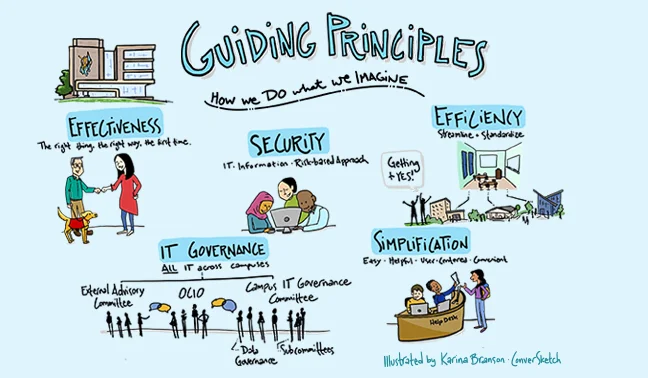
IT Governance
Defining and implementing a coordinated governance structure to facilitate effective IT decision making
- Governance of all IT on campus, not just CSSD
- Areas of focus for governance: data, research IT, and student systems
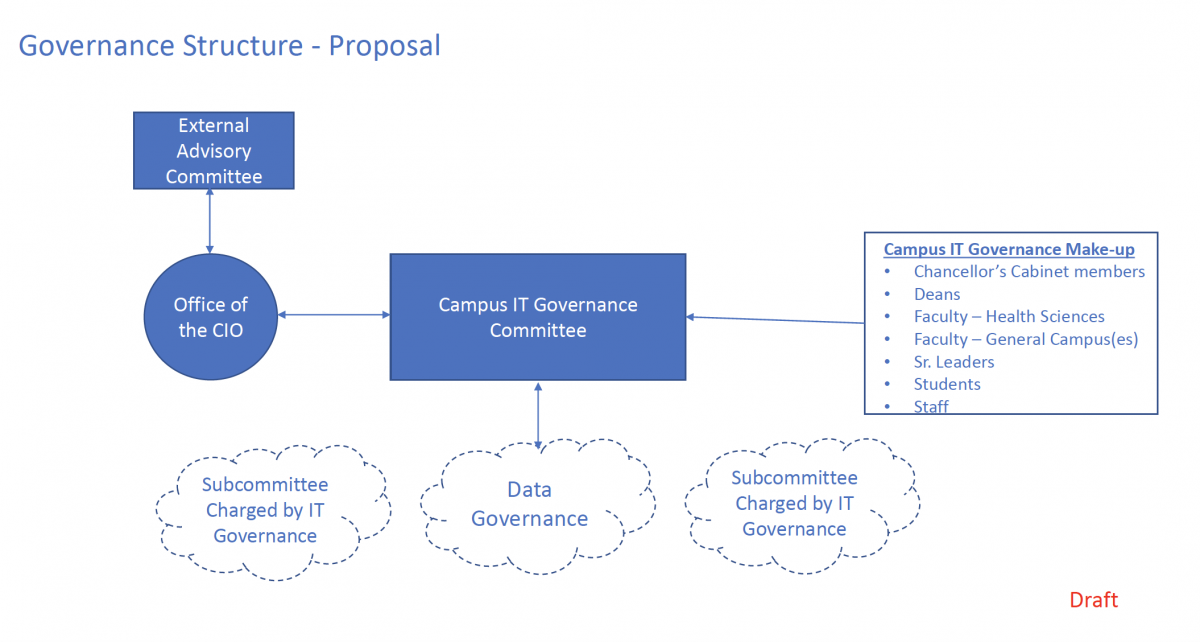
Effectiveness
Creating a University-wide IT culture to foster collaboration, enable effectiveness of IT service delivery, and promote partnership for innovation at Pitt
- Doing the right thing, the right way, the first time
- How to best use our campus resources to achieve the above
- How well we deliver on our It plan, enabling the University to realize strategic goals
Efficiency
Enabling University-wide coordination on IT budget formulation and strategic investment planning
- Streamline IT, organizational consolidations, eliminate duplication and waste
- Technology standardization plan – use what we have to maximize our IT investments
Simplification
Protecting University research, while keeping safe the privacy of individuals and the integrity of data across the University
- Common technology stack; strategic vendor partners deep/broad
- Make systems easier/better for faculty, staff, students, and alumni
- Rationalize applications
- Single IT help desk; single point of contact for users
Security
Improving IT support activity across the University to deliver consistent technology service
- Audit – ensure compliance
- Clear policy creation
- Risk-based approach